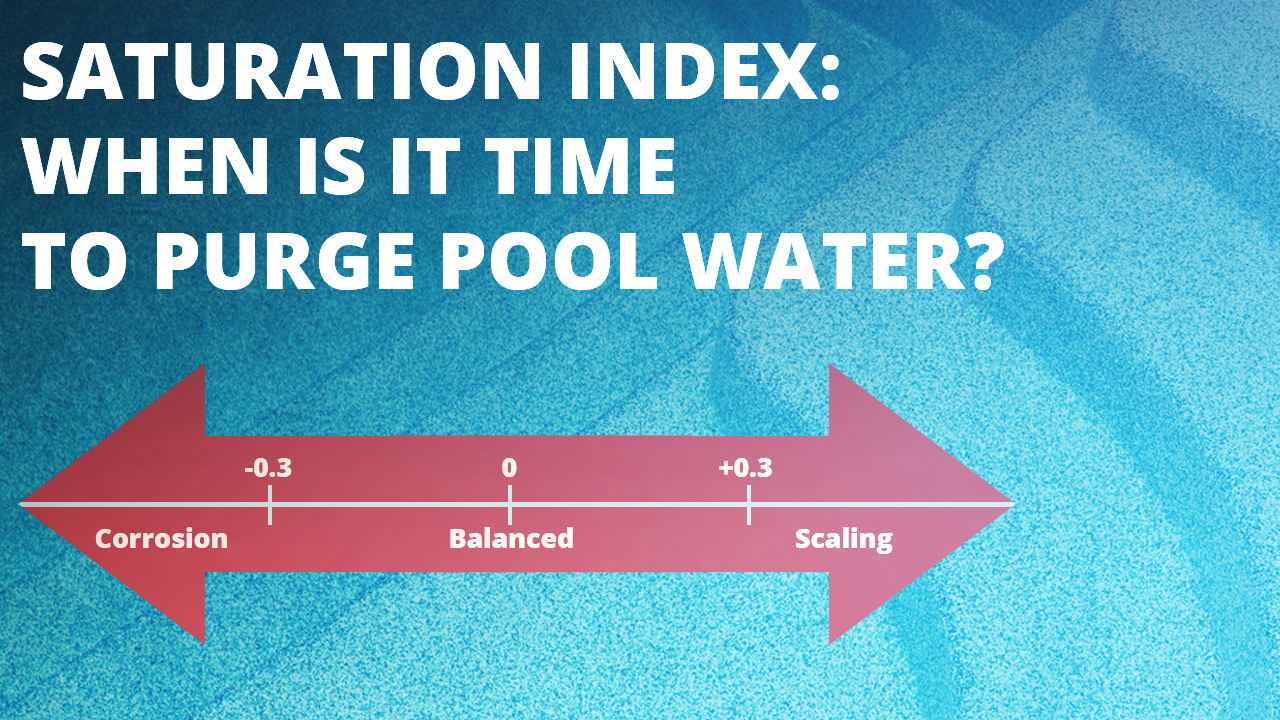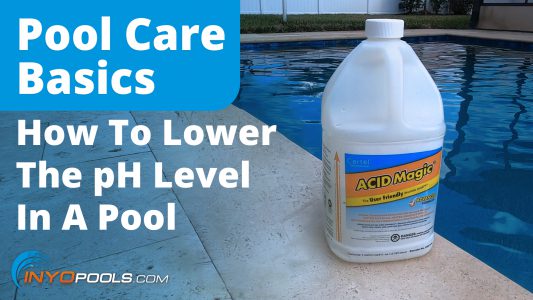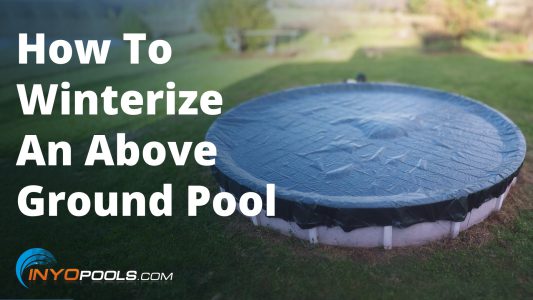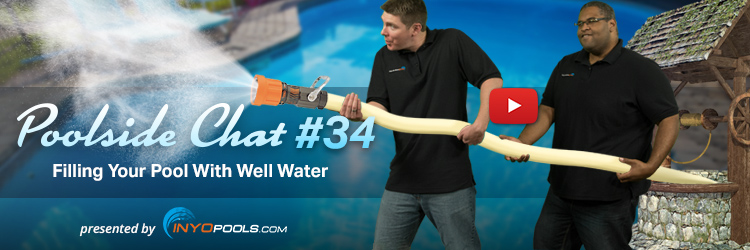The Langelier Saturation Index (LSI) measures the sum of all the added chemical agents as well as the organic and inorganic material in your pool water. This detritus is the type of material that your filter does not catch. Knowing your water’s saturation levels will let you know when it is time to treat or your purge pool water to start fresh. Thankfully, the good people at Taylor Technologies provided the source material for this article.
Symptoms of Oversaturated Water:
- Slowed chemical reactions when adding balancing agents
- Water has lost its shimmer (i.e. it is dull)
- Cloudiness is ever-present, even after using clarifiers or flocculants
- Slowed reaction to balancers and chlorine
SIgns of Healthy Pool Water
- Shimmering water
- No chlorine smell – low chloramine levels
- No stains on wall or suspended particles in water
The Formula: SI = pH +TF + logCH + logALK – CONSTANT
The 5 pillars of the LSI that we will need to calculate the saturation index (SI) of our water are:
- pH
- Temperature Factor (TF), aka Water Temperature
- Calcium Hardness (CH)
- Carbonate Alkalinity
- Total Dissolved Solids (TDS), sometimes referred to as CONSTANT
Recommended Test Kit – Taylor Water Test Kit – K2005
pH – The pH level of your water determines if it is acidic, neutral, or basic. On the scale shown in this step, you can see that 0 represents the most acidic, and 14 is the highest base. Pool water should be maintained between 7.2 – 7.8, with the ideal range being 7.4 – 7.6.
Temperature Factor (TF) – All we need for this data point is a simple water thermometer. We will be using Fahrenheit. Sorry Celsius lovers. Algae and bacteria are more inclined to take hold in warmer water.
Calcium Hardness (CH) – The measuring of calcium hardness determines if your water is considered hard or soft. The higher the calcium, the harder the water. Hard water is more likely to stain or have a foul taste. On the other hand, soft water can damage pool surfaces as water will try to leach calcium from the pool basin’s surface. Leaching will cause pockmarking and deposits.
- High Calcium Hardness – Hard water, calcium deposits form on pool walls or plumbing; chemical heart attacks
- Low Calcium Hardness – Will leach from pool surface causing pockmarks
Alkalinity – for this equation, we will not be using the usual Total Alkalinity, but rather the carbonate alkalinity. The carbonate alkalinity isolates CYA from the total alkalinity result to provide a more accurate sum. We also remove the CYA, because we account for it in a later step.
Carbonate Alkalinity = Total Alkalinity – (CYA x .33)
Becomes
CA = 80 ppm – (90 x .33)
then,
50 TA = 80 ppm – 30 ppm (rounded up)
Total Dissolved Solids (TDS) – is the measurement of all the chemicals, body oils, pollen, dirt, and other particles suspended in your water that do not evaporate. The higher the TDS, the more saturated your water is (which usually is not the best thing). For our equation, we need to measure TDS, then use the below chart to plug in the correct value.
Water with a high TDS will have a dull, lusterless appearance.
| Total Dissolved Solids (TDS) | TDS Factor |
|---|---|
| < 1000 ppm | 12.10 |
| 1000 ppm | 12.19 |
| 2000 ppm | 12.29 |
| 3000 ppm | 12.35 |
| 4000 ppm | 12.41 |
| 5000 ppm | 12.44 |
How to use the formula
At this point, you should have all the raw numbers for the 5 pillars, but we can’t go plugging in numbers just yet. For the three pillars – Calcium Hardness, Total Alkalinity, and Temperature, we need to convert our results into the Factor Scale listed on the accompanying chart. If you have a reading that falls between two factors, try to find the best guestimate where your result would fall in the gap.
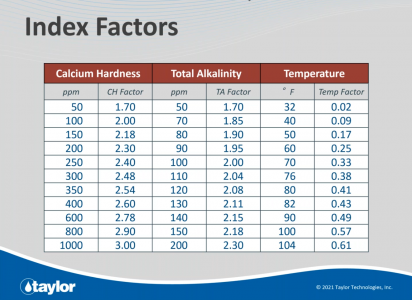
Problem example:
pH = 8.0
Temp = 82 F, becomes .43
CH = 100, becomes 2.0
TA = 70, becomes 1.85
TDS = 700, becomes 12.10
8.0 + .43 + 2.0 + 1.85 – 12.10 = Saturation Index of .18
When to Purge Your Water
The sum of your formula may be within the optimal -.3 to +.5 range, but that doesn’t mean you can ignore any imbalances. In the above example, the pH and alkalinity are out of balance which means a constant struggle to keep your water healthy, unless corrected. The saturation index is a great guide for tracking water health, but don’t think the sum is more important than the individual parts.

